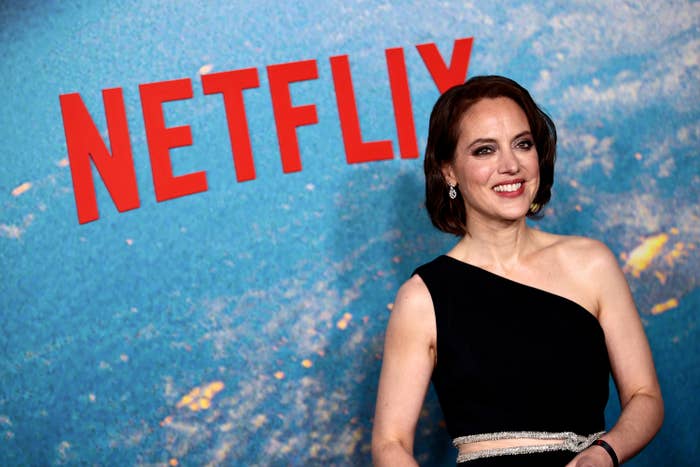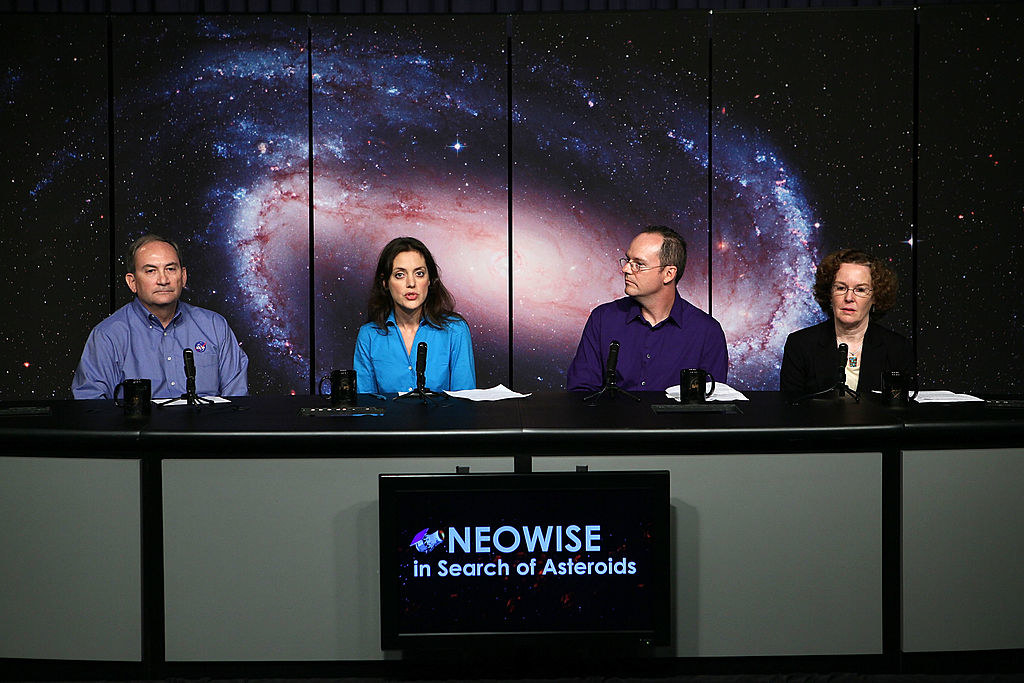You've probably already seen Don't Look Up, Netflix's second-most successful film ever!
It's a ~frustratingly~ brilliant movie, so we were chuffed when we were given the chance to speak with Dr. Amy Mainzer, one of the world's leading scientists on asteroid detection and planetary defence, and an advisor on the film.

Here's what Dr. Amy had to say about her experience working on the movie, as well as how true to life the plot is.
BuzzFeed UK: Hi Amy! Let's jump straight into the main question viewers of Don't Look Up had. The main thrust of the movie's plot is that there's a comet on course to collide with Earth and destroy it – how likely is that to happen?
Amy: Hi! Well, that is, from my perspective, the question. Fortunately, for global-scale events like the one we see in the movie, those are truly rare. We know this because we're here on Earth right now! The wiping out of the dinosaurs happened 65 million years ago, and we haven't had another an event like that since then, so we know that it sort of can't happen on any time scale more frequent than roughly a hundred million years, give or take.
Also, we know of 95% of the really big near-Earth asteroids that are larger than 1km in size. There's a worldwide community out there who've been working on this for a couple of decades, at least.
BuzzFeed UK: Phew! Dare we ask, what about smaller asteroids?
Amy: It's not as good news for smaller events i.e. things that aren't capable of causing a global extinction event, but large enough to cause ground damage. There are a lot more of these, they're most frequent, and a much smaller fraction of them have been found.

BuzzFeed UK: Okay... So how do scientists keep track of all these asteroids and comets?
Amy: In the real world, we send observations of asteroids and comets to a place called the Minor Planet Center (MPC) – there's a reference to it in the movie! It's basically a worldwide clearinghouse for all observations of asteroids and comets. When we detect something we think is a new object, we send it to them and they go through their database to see if it's something that's already been seen before.
Every day, the MPC is constantly receiving data from observers all over the world, and running huge calculations to check whether or not there's a match with something we already know of. If there's no match, the word goes out and the race is on to get more data so we can pin down orbits.
BuzzFeed UK: That's a relief! Are there emergency protocols for near-Earth asteroids or comets like those we saw in the film?
Amy: There didn't use to be, but now there is the Planetary Defense Coordination Office at NASA. There's protocol in place, but what you see in the movie is reasonably realistic for a couple of astronomers who don't routinely work on asteroids and comets.
BuzzFeed UK: Let's segue slightly – did you work a lot with Jennifer and Leonardo on how to act like scientists?
Amy: Yeah, absolutely! I think that's a part of the movie I'm really happy with. I wanted to show how scientists think and how we react, especially when we have bad news to deliver. I know a lot of scientists feel deeply frustrated when we have news to communicate, as well as possible solutions that can make things better – we do get ignored a lot!
BuzzFeed UK: Why was it so important to get their characters right?
Amy: In a lot of films and TV, scientists are kind of portrayed as caricatures, so an important thing for me in this movie was to portray scientists as fully realised human beings. We're always trying to get the news out about things we're learning about – be it climate change, loss of biodiversity, the pandemic, even asteroids and comets! We need to be able to communicate with people what we are learning, and it's important for them to listen.
BuzzFeed UK: How was it working with Leo and Jen? Did they get where you were coming from?
Amy: It was great working with both of them because they're both big science fans! They're both really interested in using their platform and their voices to try and support science and some of the important issues. We actually had a lot of common goals in terms of the message we wanted to convey with the movie.
BuzzFeed UK: Is there a particular scene you remember working on with Leo or Jen?
Amy: With Leo, we rehearsed that scene where he has a bit of a meltdown many, many times. I kind of told him, you have to speak for the scientific community here – this is our frustration, these are our fears! When we're not being heard this is how we feel, and this is your chance to channel all that. We're citizens of planet earth too, and we're watching all of these things happen knowing that we can take steps to avoid the worst possible outcomes but only if people listen to what we are recommending.
Here's the moment where Leo spoke for the science community:
View this video on YouTube
BuzzFeed UK: Did you ever have to let artistic licence take over from the science?
Amy: Yes, there were a couple of things. First of all, we would normally observe the skies in total darkness, but it's really hard to make a film in pitch black. Secondly, it's extremely difficult to build a spacecraft in just a few months – normally it takes years! Comets do come with very little warning sometimes, but I doubt we could ever build a fleet of spaceships as quickly as the movie makes out.
I actually asked Adam if he could give it five years for the comet to arrive because that's much more realistic from a spacecraft design and construction standpoint. He said no because it's kind of hard to sustain the narrative over five years. He's probably right because five years of design review would not make for the most interesting viewing!
BuzzFeed UK: Did you throw in any nods to the science community?
Amy: There are a few little easter eggs in there for scientists! The bit about the snacks, that's important. I mean, anybody who's ever worked night shifts knows that snacks are really important, and for someone to interfere with that – it's just greatly upsetting! The Carl Sagan doll is just a nod to somebody who has had a wonderful influence on so much of what we do.
Perhaps the best gag of the movie, here's Jennifer Lawrence aghast at being charged for free snacks:
View this video on YouTube
BuzzFeed UK: In relation to BASH, what are your thoughts on the billionaire space race?
Amy: Something that's a huge strength of science is the peer-review process – it really is a powerful process for ensuring that results are replicable. When someone comes in and subverts that process by saying, "okay, I have money and power, we're going to do it this way regardless of whether or not the result is replicable", we're far less likely to come out with a good outcome.
BuzzFeed UK: Last question – are film and TV useful for getting the message out about important scientific ideas and stories?
Amy: Absolutely! Film and TV is a medium for our culture, it's the medium that binds us all together. I think it's vital that the arts reflect the problems that we're grappling with in the world of science. From my standpoint, science tells us the facts about how the world works, but it doesn't teach us what to do with our feelings about it. That's where the arts are important because they help us process what we're feeling, and help other people share our concerns.
The more we talk about issues like climate change and loss of biodiversity, the better chance we have of doing something about them. I definitely think we need a lot more stories about these kinds of things.
So, we don't have to worry too much about global extinction events thanks to Dr. Amy and her colleagues; however, we DO have to worry about ignoring scientists! We don't want to end up like Jason Orlean, do we?!
Note: Some answers were edited for length and/or clarity.


